Kansas City Southern Rail Crossings Closures by DOTD
The Louisiana Department of Transportation and Development (LADOTD), Federal Highway Administration (FHWA), and Federal Rail Administration (FRA) are proposing a project that includes the maintenance and rehabilitation of ten (10) and closure of five (5) railroad crossings along the Kansas City Southern (KCS) railroad in the City of Baton Rouge, East Baton Rouge Parish.
The crossings that are proposed to be closed will be complete closures. The sidewalks at these crossings would be removed; however, pedestrian crossings would be created at several of the other crossings, usually where sidewalks come up to the railroad right-of-way and end. Detours will be required for the maintenance and rehabilitation during the in-roadway crossing work. The detours will be coordinated with the City of Baton Rouge at the time of construction. Detours will not be required for the signal work at crossings that will remain open.
The maintenance and rehabilitation work will be completed within existing KCS, City of Baton Rouge, or LADOTD right-of-ways. Additional right-of-ways may be required for street connectivity on the east end of Orange Street to connect Orange Street with Matilda Street. Connecting roads within KCS right of way are proposed to link Smith Street, Orange Street, and Apple Street, paralleling the west side of the railroad tracks.
The crossings to be closed are:
· Gayosa Street
Changes coming to Kansas City Southern crossings.
· Julia Street
· Smith Street
· Orange Street
· Apple Street
The crossing to be rehabilitated are:
· North Street
· Main Street
· Laurel Street
· Florida Boulevard
· Convention Street
· Wisteria Street
· South Boulevard
· Myrtle Walk Street
· Terrance Street
· Louise Street
This is the fourth LaDOTD project in Old South Baton Rouge adversely affecting travel and accessibility. The other three are:
· Closure of Terrace at Highland to accommodate updated I-10 E exit ramp
· New I-110 S exit onto Terrace Street, and
· The I-10 widening project
When combined with these railroad crossing closures the Old South Baton Rouge neighborhood will be further subdivided, chopped up into disconnected bits. People living in the area will find it increasingly difficult to travel into, out of, and around the neighborhood. This will have a lasting negative impact that follows an unfortunate historical trend in this neighborhood.
While this plan is much improved from the previous version, we feel it will cause harm to residents along Orange, Apple, and Smith Street. Housing values will likely be lowered. Youth are extremely unlikely to walk several blocks out of the way to access City Park.
The current plan provides safety improvements for vehicles, but not for pedestrians, cyclists, and other vulnerable road users. The railroad came after this neighborhood was built, but these residents continue to shoulder harm, depreciation, and division of their community. Bike Baton Rouge is concerned not only about the residents of these streets, but about what these choices say about our community as a whole. Whose voice matters?
We encourage you to submit a public comment to DOTD, to voice concern about the safety of youth and harm to this community.
We would like to see DOTD come up with funding for basic safety measures to keep these crossings open.
To submit comments to DOTD, email dotdcs@la.gov with "RE: H.012449" in the subject line.
Riding in Baton Rouge - A note on riding on sidewalks
Cranksgiving 2015
Can you ride on a sidewalk in Baton Rouge? And should you?
Louisiana state law does not prohibit riding a bicycle on a sidewalk. City ordinance, however, restricts riding on sidewalks in 'business districts', which are defined by Louisiana state law as "... territory contiguous to and including a highway when within any six hundred feet along such highway there are buildings in use for business or industrial purposes, including but not limited to hotels, banks, or office buildings, railroad stations and public buildings which occupy at least three hundred feet frontage on one side or three hundred feet collectively on both sides of the highway."
Uh. What?
We read it a handful of times and managed to condense it down into something a little more manageable. A sidewalk counts as being in a business district when there are a total of 300 feet or more of public or business buildings on either side of the road within a 600 foot length of that road. If you don't have a tape measure with you while riding, then as a rule of thumb, if 25% or more of the roadway is lined with public or business buildings, you're probably in a 'business district'.
Here are a few examples from around Baton Rouge for what these kinds of areas look like.
Business Districts :
3rd Street (1200 feet of public business or business buildings)
Highland Road (900 feet of public or business buildings)
South Boulevard (350 feet of public or business buildings)
Not Business Districts :
Perkins Road (150 feet of public or business buildings)
Jefferson Highway (0 feet of public or business buildings)
What does all that mean?
In 'business districts', riding a bicycle on the sidewalk is illegal. Period. Outside of business districts, riding on the sidewalk is legal as long as it's not otherwise signed, and as long as bicyclists yield the right of way to pedestrians and gives audible signals before overtaking and passing such pedestrian. (Note that in this context, letting pedestrians know you're about to pass them is not only mandatory - it's good manners, too!)
If you ARE going to ride on the sidewalk, then there are a couple of other things to consider. The main one is driveways. Drivers who are pulling out of driveways that cross sidewalks expect to encounter pedestrians, who are likely travelling at no more than three miles per hour. If you're pedaling along at ten miles per hour, or more, then you're outside of the area that a driver may look - and could end up being hit as the driver pulls out. You're even more likely to be hit if you're riding on the sidewalk against traffic (on the 'left' side of the road), as drivers will be looking towards traffic to their left as you're approaching from their right.
Take note, also, of the sidewalk condition - which often may be bumpy, cracked, or otherwise hazardous.
If you're riding on the sidewalk use caution at all driveways, and assume that drivers will NOT see you - particularly if you're riding against traffic.
When do I have to ride on the sidewalk?
Never! If a sidewalk exists outside of a business district, then if you choose to ride on it, by all means have at it! But you're just as welcome to ride on the road.
Louisiana law does not make use of sidewalks, bike lanes, shoulders, or separated bike paths mandatory at any time, but Baton Rouge city ordinance states that 'Whenever a usable path for bicycles has been provided adjacent to a roadway, bicycle riders shall use such path and shall not use the roadway'. Note the inclusion of the word 'usable'. If the path is blocked, in a state of disrepair, in any way substandard to the roadway, or otherwise 'unusable' - then you may ride in the roadway if you so choose.
We would argue that given a) the state of sidewalks in Baton Rouge, b) the connectivity of sidewalks in Baton Rouge, and c) the inherent danger of riding on sidewalks as described above, that all sidewalks in Baton Rouge could be argued to be 'unusable' in this context.
(Edit made to the above passage on 4/14/17)
As always, if you're having trouble getting around by bike safely and easily - check out our bike map for the best routes in Baton Rouge!
---
NOTE : We're not lawyers. We're not legal experts. Sometimes we don't wear pants while we're writing this stuff. Don't take our word (or anyone else's word) for anything. Read the law yourself so that you can be well informed!
PRESS RELEASE : Bike Baton Rouge promotes spring bike safety with tips for motorists and bicyclists
Bike Baton Rouge promotes spring bike safety with tips for motorists and bicyclists
3/21/17, Baton Rouge, LA
Bike Baton Rouge, a local non-profit bicycle advocacy organization, today released a short list of bike safety tips which they hope will result in increased safety amongst bicyclists and motorists sharing the road. Spring sees greatly increased bicycling as the warmer weather and extended evening daylight hours allow for more people to bicycle after work or school.
The last two weeks have seen several bicyclists and pedestrians involved in motor vehicle crashes in Baton Rouge, particularly along Florida Boulevard - a road, that Bike Baton Rouge notes, has no bicycle or pedestrian facilities on a near eleven mile stretch between North 19th Street and the East Baton Rouge Parish border at the Amite river.
Louisiana ranks third in the nation for adult bicycling deaths after Delaware (second) and Florida (first) according to a 2015 study by the Center for Disease Control, but Torkkola says that Louisiana rankings will improve as both bicyclists and motorists become more accustomed to the increased numbers of people riding bicycles in the state.
“We wanted to keep things really simple with our safety tips to give maximum impact from a small and easily digestible amount of information.” said Mika Torkkola, Bike Baton Rouge President, “And we wanted to acknowledge that both bicyclists and motorists have the responsibility to avoid causing crashes on our roads.”
The complete set of Spring Safety Tip graphics are available at bikebr.org/safety, and include tips for both bicyclists and motorists, complete with statistics that show the resulting safety increases associated with correctly following each tip. Each safety tip is based on Louisiana road law.
Read the full list of Spring Safety Tips and learn more about bicycle safety at bikebr.org/safety
Mika Torkkola
225 571 2906
bikebatonrouge@gmail.com
Bike Baton Rouge is a local non-profit 501 (c) 3 organization and has been dedicated to making bicycling trips in Baton Rouge safer and more enjoyable since 2006.
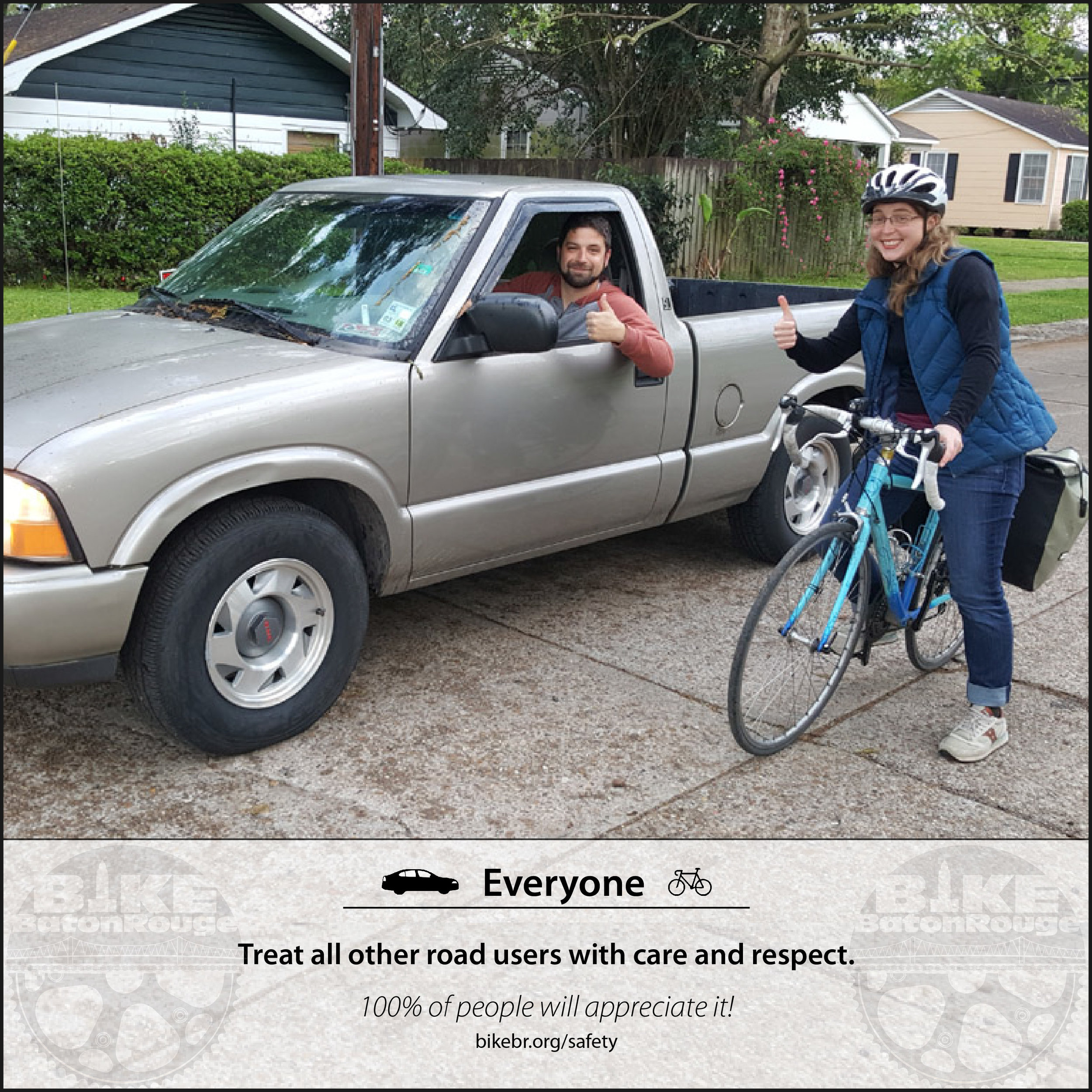
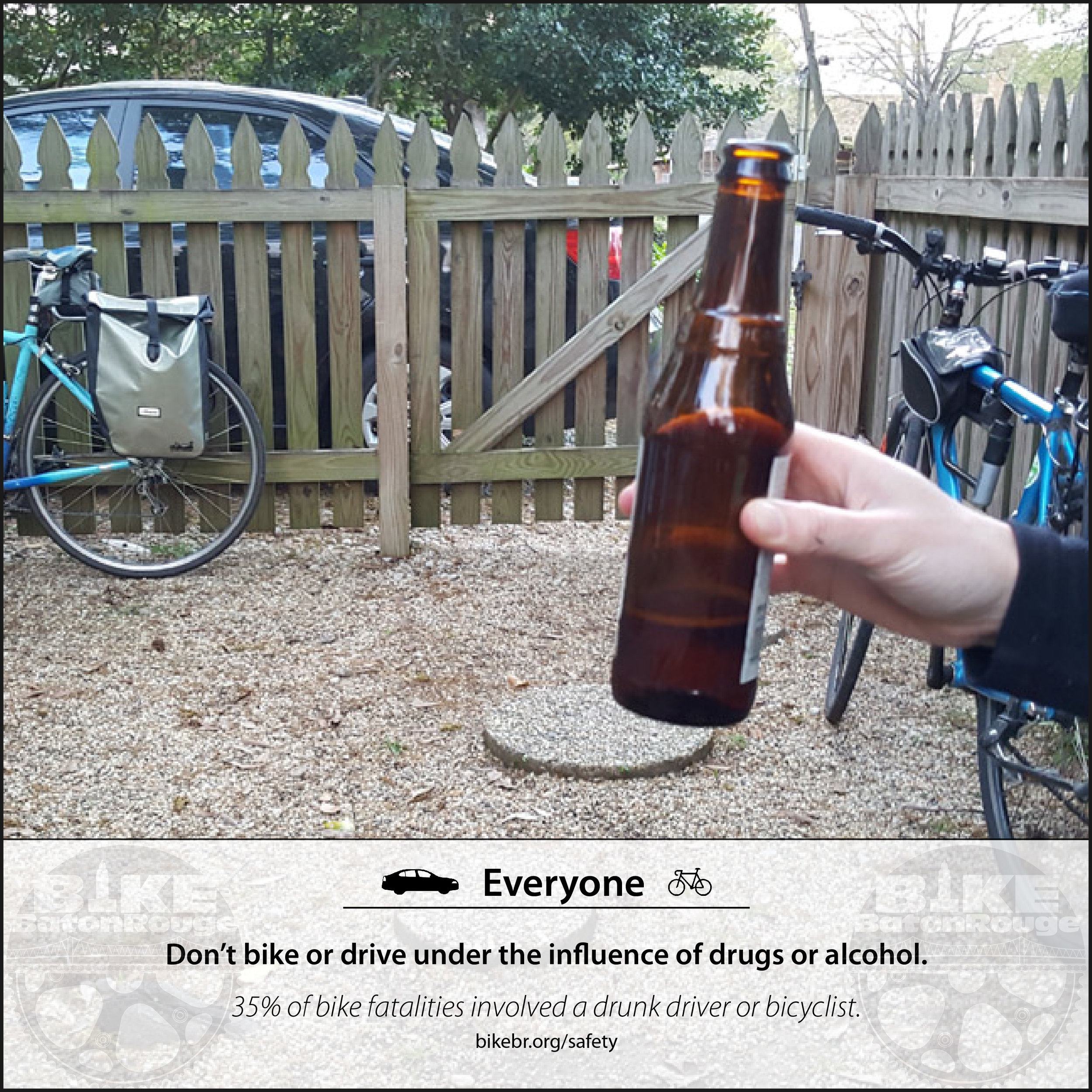
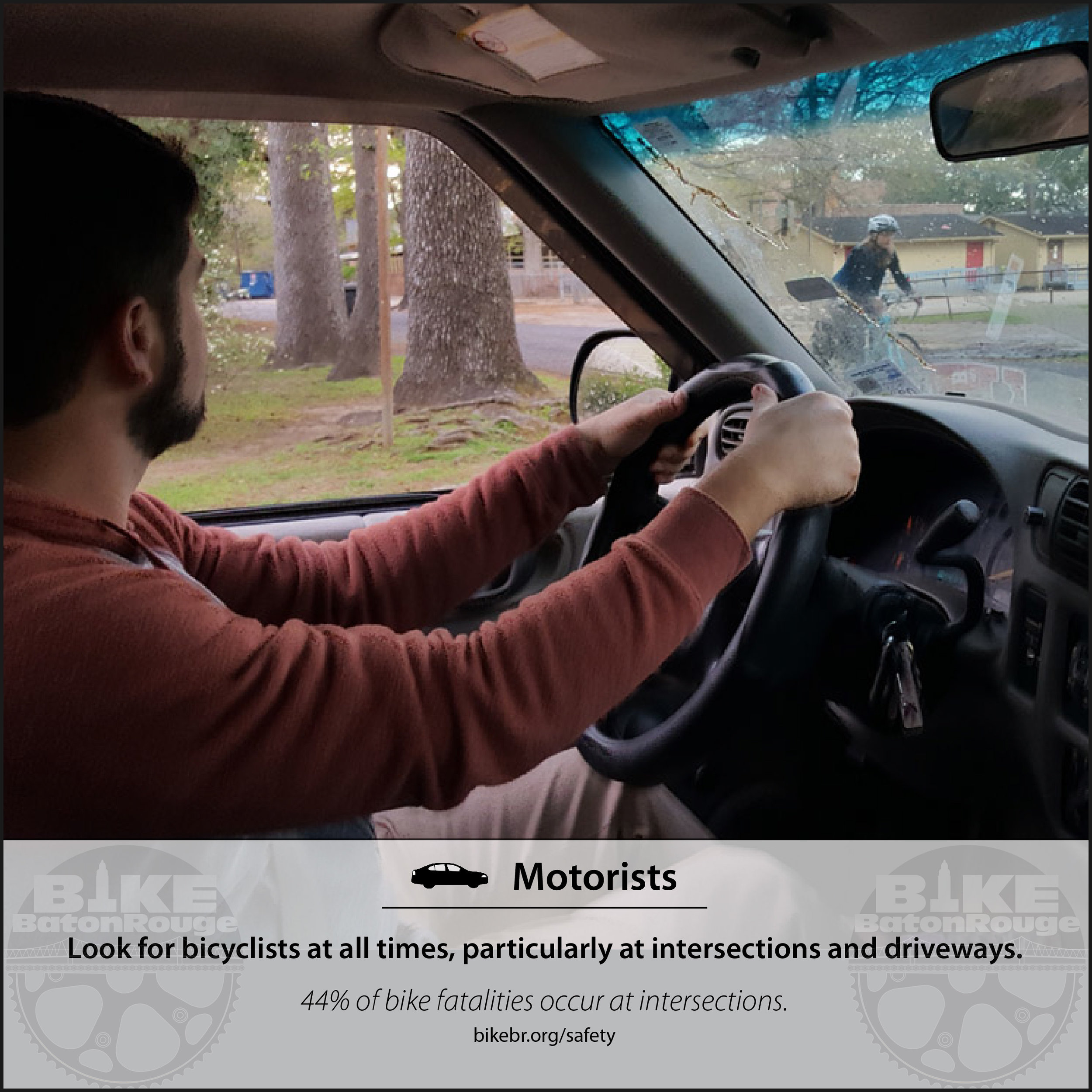
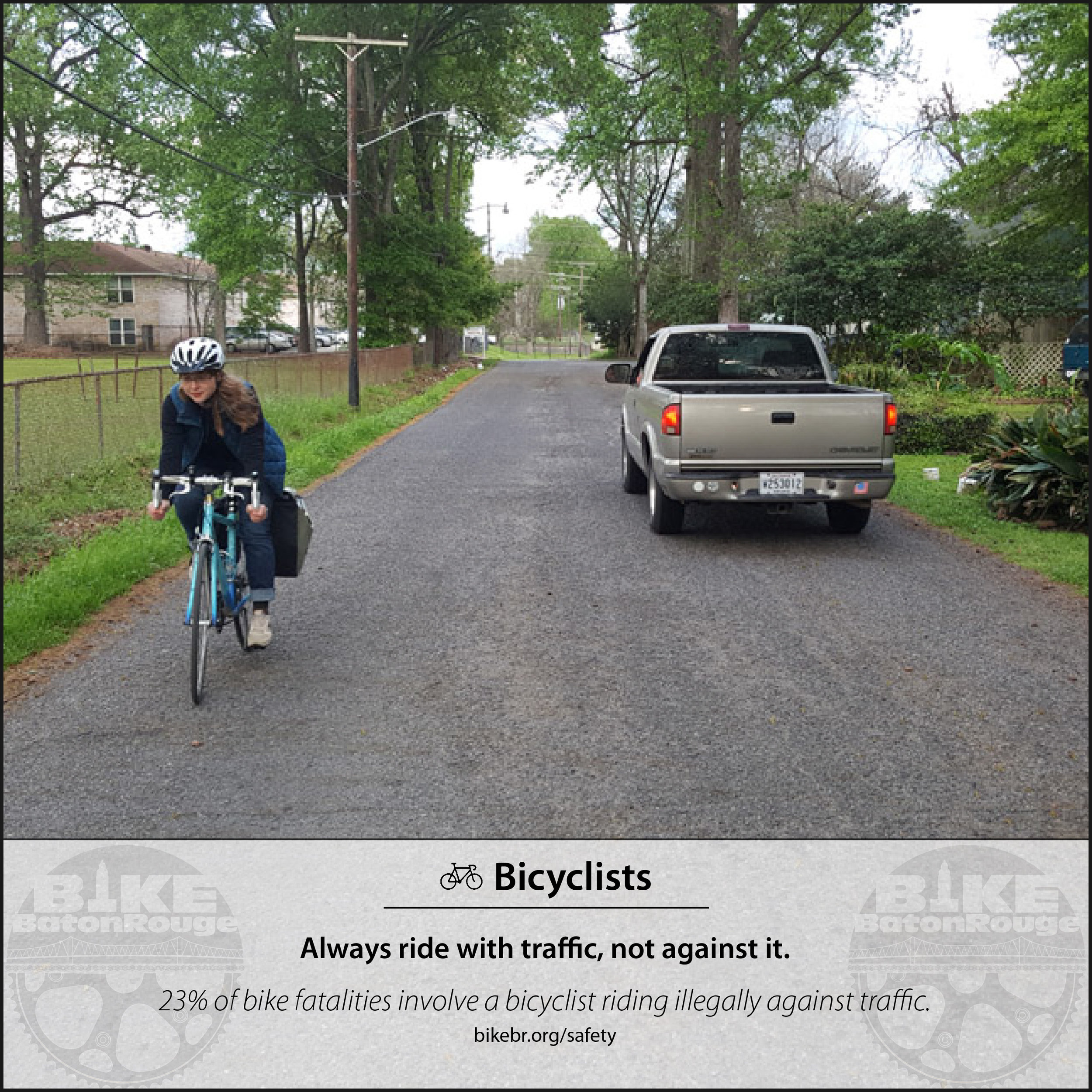
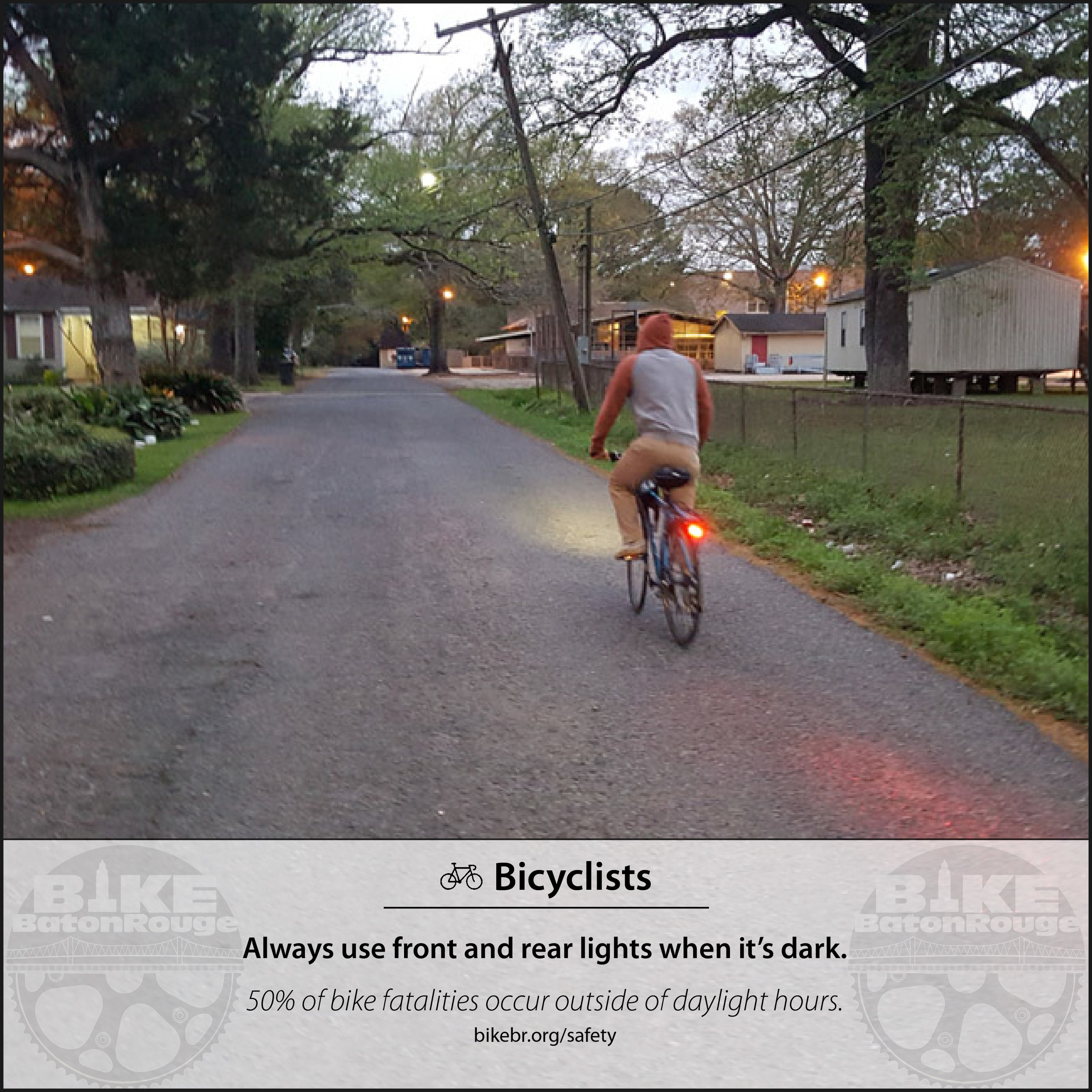
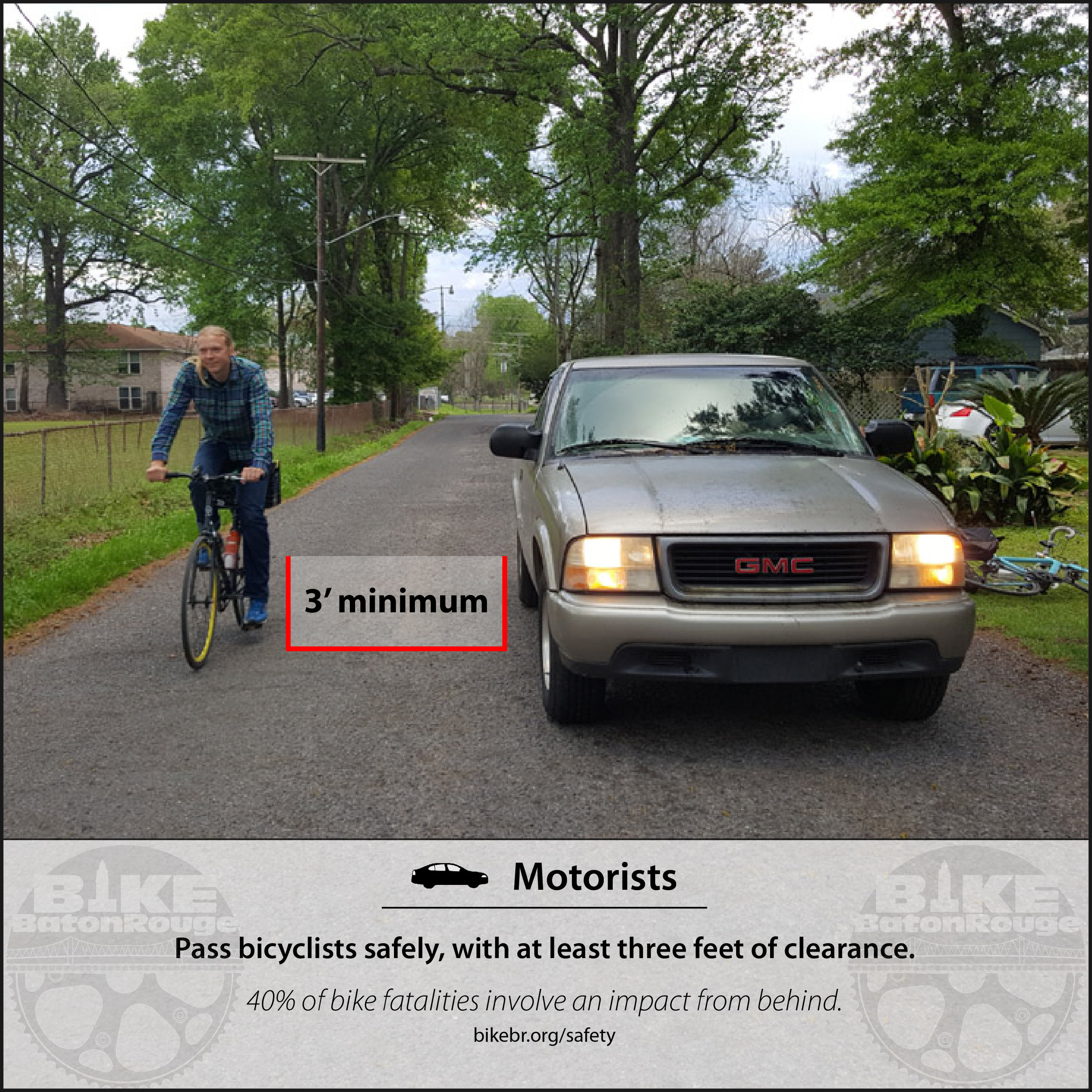
Press release - Statement regarding Plank Road bicycle fatality
3/17/16
Baton Rouge, LA
Bike Baton Rouge was deeply saddened to learn of the death of a bicyclist following a collision with an 18-wheeler on Plank Road in North Baton Rouge. Bike Baton Rouge would like to extend our condolences to the friends and family of the victim.
Per police reports, the as yet unnamed bicyclists was riding northbound in the southbound traffic lane when he was struck by a turning 18-wheeler at the intersection of Byron Avenue. Unfortunately, collisions involving bicycles travelling against traffic occur with alarming frequency, and Bike Baton Rouge would like to remind all bicyclists that riding against traffic is both an illegal and highly dangerous activity.
“Anyone travelling against traffic is practically invisible to motorists who are preparing to make a right turn,” according to Mika Torkkola, a Bike Baton Rouge Board Member and Certified Bicycle Safety Instructor. “And unfortunately in this case it resulted in the loss of a life.”
Bike Baton Rouge notes that there are very few bike lanes in Baton Rouge, and fewer still in the Northern parts of the city, where many residents use bicycles as their primary means of transportation.
“If the people of North Baton Rouge had bike lanes or other facilities to get around town safely and easily there’d be less reason to engage in such risky behaviour,” Torkkola added, “it’s a largely ignored part of our city and we hope that will change quickly before more people are injured or killed.”
For more information, visit bikebr.org, look up Bike Baton Rouge on facebook, or email Bike Baton Rouge at bikebatonrouge@gmail.com
Mika Torkkola
225 571 2906
bikebatonrouge@gmail.com
Bike Baton Rouge is a local non-profit 501 (c) 3 organization and has been dedicated to making bicycling trips in Baton Rouge safer and more enjoyable since 2006.




